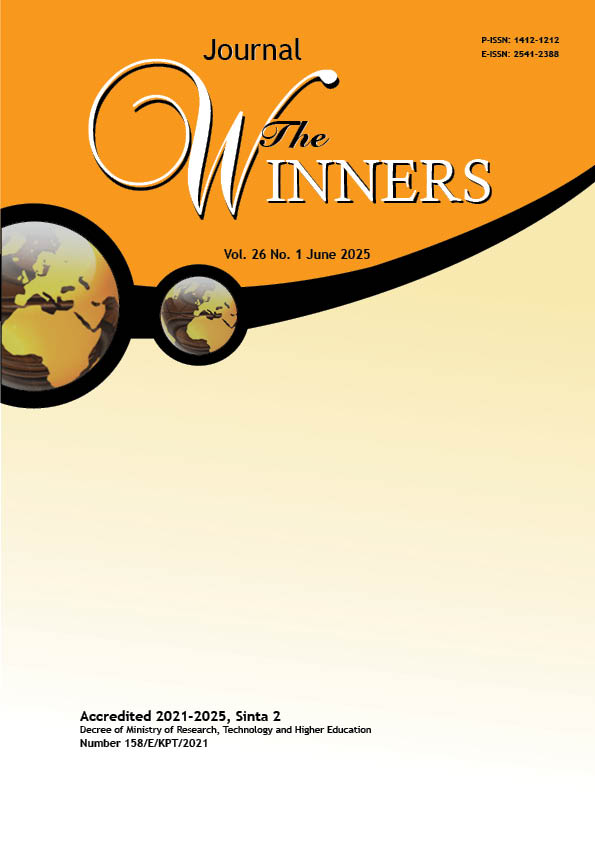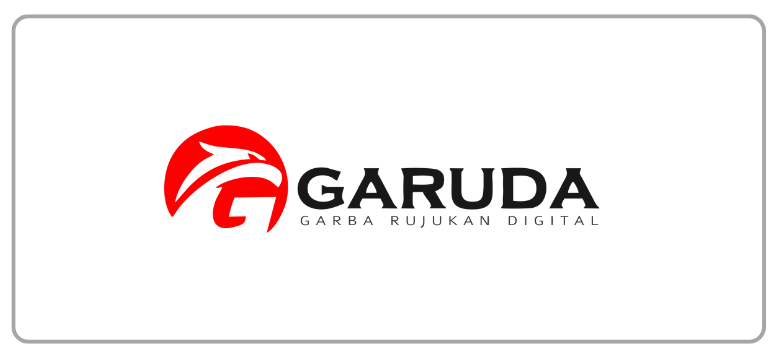The Effect of Physical Experience and Integrated Information on Customer Purchase Behavior in Online-to-Offline Commerce
DOI:
https://doi.org/10.21512/tw.v26i1.12584Keywords:
O2O purchase intention, physical experience, integration online offline information, perceived benefit, perceived riskAbstract
Online-to-Offline (O2O) is a business model increasingly being developed and widely implemented by companies in Indonesia. Therefore, the research examined the factors influencing purchasing behavior in Indonesian O2O commerce through economic theories, namely Perceived Risk and Perceived Benefit. The research procedures were carried out using a quantitative approach, and the data obtained were analyzed with Partial Least Square Structural Equation Modeling. The sample data was selected using a purposive sampling method and collected through an online survey instrument from 248 millennial customers who had made O2O purchases. The results show that all exogenous variables had significant effects, except for Physical Experience, which did not significantly affect Perceived Risk. Meanwhile, Integration Online-to-Offline Information (IOOI) had the most significant impact on enhancing customer purchase intention. The results also show that Perceived Benefits had a significant impact on customer purchase intention. This research offers a novel perspective by exploring how integrated customer behavior across digital and physical channels influenced purchasing decisions within the Indonesian context, where existing literature was limited. The results provide valuable insights for companies in formulating strategies to deliver effective physical experiences and IOOI. Companies should ensure that the information available across online and offline channels is complementary and consistent to maximize customer purchase intention.
References
Arnold, M. J., & Reynolds, K. E. (2003). Hedonic shopping motivations. Journal of Retailing, 79(2), 77-95. https://doi.org/10.1016/S0022-4359(03)00007-1.
Arora, S., & Sahney, S. (2019). Examining consumers’ webrooming behavior: an integrated approach. Marketing Intelligence and Planning, 37(3), 339-354. https://doi.org/10.1108/MIP-05-2018-0152.
Blibli. (2022). Resmi! Blibli Serempak Buka Tiga Toko Ritel Offline (Blibli Store). Blibli. https://about.blibli.com/en/media/press-release/resmi-blibli-serempak-buka-tiga-toko-ritel-offline-blibli-store
Chang, Y.-W., Hsu, P.-Y., & Yang, Q.-M. (2018). Integration of online and offline channels: A view of O2O commerce. Internet Research, 28(4), 926-945.
Cho, J. (2004). Likelihood to abort an online transaction: Influences from cognitive evaluations, attitudes, and behavioral variables. Information and Management, 41(7), 827-838. https://doi.org/10.1016/j.im.2003.08.013.
Chokkannan, P., Bhavani Shankar, S., & Pattusamy, M. (2023). The fashion retailer’s opportunity: Effect of deal-seeking behavior on mobile shopping intention of showroomers. Asia Pacific Journal of Marketing and Logistics, 35(5), 1187-1205. https://doi.org/10.1108/APJML-12-2021-0914.
Desmonda, D., Jimmy, S. Y., & Annas, M. (2024). Understanding the influences of hedonic personality towards advertising avoidance on social media. The South East Asian Journal of Management, 18(1), 81-104. https://doi.org/10.21002/seam.v18i1.1516.
Flavián, C., Gurrea, R., & Orús, C. (2020). Combining channels to make smart purchases: The role of webrooming and showrooming. Journal of Retailing and Consumer Services, 52. https://doi.org/10.1016/j.jretconser.2019.101923
Forsythe, S. M., & Shi, B. (2003). Consumer patronage and risk perceptions in Internet shopping. Journal of Business Research, 56(11), 867-875. https://doi.org/10.1016/S0148-2963(01)00273-9.
Gensler, S., Neslin, S. A., & Verhoef, P. C. (2017). The Showrooming phenomenon: It’s more than just about price. Journal of Interactive Marketing, 38, 29-43. https://doi.org/10.1016/j.intmar.2017.01.003.
Guo, Y., Zhang, M., & Lynette Wang, V. (2022). Webrooming or showrooming? The moderating effect of product attributes. Journal of Research in Interactive Marketing, 16(4), 534-550. https://doi.org/10.1108/JRIM-08-2020-0161.
Hair, J., Hult, T., Ringle, C., & Sarstedt, M. (2014). A Primer on Partial Least Squares Structural Equation Modeling. SAGE Publications,Inc
Hair, J., Hult, T., Ringle, C., & Sarstedt, M. (2022). A Primer on Partial Least Squares Structural Equation Modeling. SAGE Publications, Inc.
Haridasan, A. C., Fernando, A. G., & Saju, B. (2021). A systematic review of consumer information search in online and offline environments. RAUSP Management Journal, 56(2), 234-253. https://doi.org/10.1108/RAUSP-08-2019-0174.
Hussein, R. S., & Kais, A. (2020). Multichannel behaviour in the retail industry : Evidence from an emerging market. International Journal of Logistics: Research and Applications, 24(3), 242-260. https://doi.org/10.1080/13675567.2020.1749248.
Kahneman, D. (2013). Thinking fast and slow. Farrar, Straus and Giroux.
Kim, H. -W., Chan, H. C., & Gupta, S. (2007). Value-based adoption of mobile internet: An empirical investigation. Decision Support Systems, 43(1), 111-126. https://doi.org/10.1016/j.dss.2005.05.009.
Li, Y., Liu, H., Lee, M., & Huang, Q. (2020). Information privacy concern and deception in online retailing: The moderating effect of online–offline information integration. Internet Research, 30(2), 511-537. https://doi.org/10.1108/INTR-02-2018-0066.
Mukherjee, S., & Chatterjee, S. (2021). Webrooming and showrooming: a multi-stage consumer decision process. Marketing Intelligence and Planning, 39(5), 649-669. https://doi.org/10.1108/MIP-08-2020-0351.
Nurdianti, T. (2022, October 28). Pimpin pasar o2o, mitra Bukalapak beri komitmen perluas dampak positif untuk UMKM di Indonesia. Warta Ekonomi. https://wartaekonomi.co.id/read455414/pimpin-pasar-o2o-mitra-bukalapak-beri-komitmen-perluas-dampak-positif-untuk-umkm-di-indonesia
Rakhmah, D. N. (2021, February 4). Gen Z dominan, apa maknanya bagi pendidikan kita? https://pskp.kemendikdasmen.go.id/gagasan/detail/gen-z-dominan-apa-maknanya-bagi-pendidikan-kita
Ram, J., Manoharan, A., & Sun, S. (2020). O2O adoption benefits: A managerial perspective of customer benefits. Electronic Journal of Information Systems Evaluation, 23(1), 65-78. https://doi.org/10.34190/ejise.20.23.1.005.
Ratchford, B., Soysal, G., Zentner, A., & Gauri, D. K. (2022). Online and offline retailing: What we know and directions for future research. Journal of Retailing, 98(1), 152-177. https://doi.org/10.1016/j.jretai.2022.02.007.
Schiessl, D., Korelo, J., & Dias, H. B. A. (2023). How online shopping experiences shape consumer webrooming behavior. Marketing Intelligence and Planning, 41(1), 16-30. https://doi.org/10.1108/MIP-08-2021-0254.
Shakir, M. A., Zhu, J., Shakaib, M., Akhter, M., Malik, A., & Ahmed, Z. (2022). The impact of channel integration on consumers’ channel preferences: Do showrooming and webrooming behaviors matter ? Journal of Retailing and Consumer Services, 65, 102130. https://doi.org/10.1016/j.jretconser.2020.102130.
Shankar, A., & Jain, S. (2023). Investigating webrooming behavior: A case of Indian luxury consumers. Journal of Fashion Marketing and Management, 27(2), 241-261. https://doi.org/10.1108/JFMM-09-2021-0227.
Swoboda, B., & Winters, A. (2021). Effects of the most useful offline-online and online-offline channel integration services for consumers. Decision Support Systems, 145. https://doi.org/10.1016/j.dss.2021.113522.
Thohir, G. (2023, March 27). Peluang model bisnis O2O pada perusahaan e-commerce di Indonesia. Skystar Capital. https://skystar.vc/peluang-model-bisnis-o2o-pada-perusahaan-e-commerce-di-indonesia/
Utomo, P., & Kurniasari, F. (2023). The dynamic capability and ambidexterity in the early-stage startups: A hierarchical component model approach. In Eurasia Business and Economics Society Conference (pp. 49-61). Springer Nature Switzerland.
Wang, C., Wang, Y., Wang, J., Xiao, J., & Liu, J. (2021). Factors influencing consumers’ purchase decision-making in O2O business model: Evidence from consumers’ overall evaluation. Journal of Retailing and Consumer Services, 61. https://doi.org/10.1016/j.jretconser.2021.102565
Wang, O., Somogyi, S., & Charlebois, S. (2020). Food choice in the e-commerce era : A comparison between business-to-consumer (B2C), online-to-offline (O2O) and new retail. British Food Journal, 122(4), 1215-1237. https://doi.org/10.1108/BFJ-09-2019-0682.
Xiao, S., & Dong, M. (2015). Hidden semi-Markov model-based reputation management system for online to offline (O2O) e-commerce markets. Decision Support Systems, 77, 87-99. https://doi.org/10.1016/j.dss.2015.05.013.
Xiao, L., Guo, Z., & D’Ambra, J. (2019). Benefit-based O2O commerce segmentation: a means-end chain approach. Electronic Commerce Research, 19, 409-449. https://doi.org/10.1007/s10660-017-9286-3.
Yadav, N., Verma, S., & Chikhalkar, R. (2023). Online reviews towards reducing risk. Journal of Tourism Futures, 10(2), 299-316. https://doi.org/10.1108/JTF-01-2022-0016.
Yang, Y., Gong, Y., Land, L. P. W., & Chesney, T. (2020). Understanding the effects of physical experience and information integration on consumer use of online to offline commerce. International Journal of Information Management, 51. https://doi.org/10.1016/j.ijinfomgt.2019.102046
Yao, P., Osman, S., Sabri, M. F., & Zainudin, N. (2022). Consumer behavior in online-to-offline (O2O) commerce: A thematic review. Sustainability (Switzerland), 14(13). https://doi.org/10.3390/su14137842.
Yao, P., Sabri, M. F., Osman, S., Zainudin, N., & Li, Y. (2023). Consumers’ continued intention to use online-to-offline (O2O) services in omnichannel retail: Differences between to-shop and to-home models. Sustainability (Switzerland), 15(2), 945. https://doi.org/10.3390/su15020945.
Zhang, J. Z., Chang, C. W., & Neslin, S. A. (2022). How Physical Stores Enhance Customer Value: The Importance of Product Inspection Depth. Journal of Marketing, 86(2), 166-185. https://doi.org/10.1177/00222429211012106.
Downloads
Published
How to Cite
Issue
Section
License
Copyright (c) 2025 Christine, So Yohanes Jimmy, Prio Utomo

This work is licensed under a Creative Commons Attribution-ShareAlike 4.0 International License.
Authors who publish with this journal agree to the following terms:
a. Authors retain copyright and grant the journal right of first publication with the work simultaneously licensed under a Creative Commons Attribution License - Share Alike that allows others to share the work with an acknowledgment of the work's authorship and initial publication in this journal.
b. Authors are able to enter into separate, additional contractual arrangements for the non-exclusive distribution of the journal's published version of the work (e.g., post it to an institutional repository or publish it in a book), with an acknowledgment of its initial publication in this journal.
c. Authors are permitted and encouraged to post their work online (e.g., in institutional repositories or on their website) prior to and during the submission process, as it can lead to productive exchanges, as well as earlier and greater citation of published work.
USER RIGHTS
All articles published Open Access will be immediately and permanently free for everyone to read and download. We are continuously working with our author communities to select the best choice of license options, currently being defined for this journal as follows: Creative Commons Attribution-Share Alike (CC BY-SA)

















